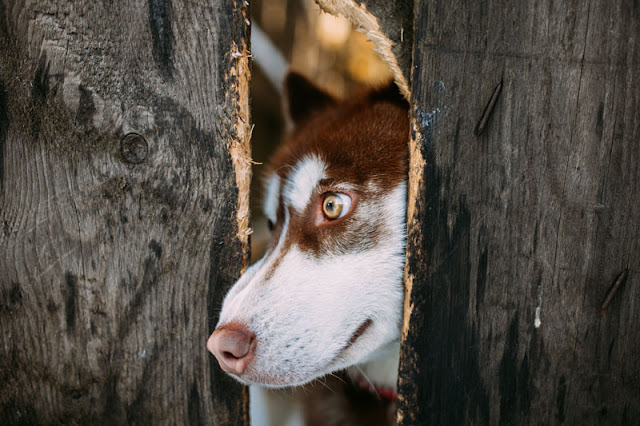Are young children more interested in animals than toys?
What do children spend time with when given a choice between animals and attractive toys?
 |
| Photo: oksankash/Shutterstock |
At what age do children develop a fascination with animals? A brand new paper by Vanessa LoBue et al investigates young children’s interest in live animals. A set of three studies looked at young children in a naturalistic play environment in which they could choose to interact with animals or toys.
The first study was an exploratory one involving children aged between 11 and 40 months. The animals were a blue and red Betta fish and a tan Sentinel hamster. They were positioned in containers on opposite walls. In the middle of the room was a selection of toys, including a doll, an airplane, fire trucks, building blocks and rattles. The children were given 5-10 minutes to play whilst their parent sat in a corner of the room, engaged in paperwork. The parent and experimenter didn’t initiate interaction with the child, but answered questions if asked. Sessions were videotaped and then analyzed.
The results showed that children interacted more frequently with the animals than the toys, and spent more time interacting with the animals than the two most popular toys. The nature of the interactions was also different; they gestured towards the animals more, talked about them more and asked more questions.
The animals were always in an enclosure, so the children could only look at them and not physically touch them. One obvious difference between animals and toys is that the animals move. It would be very difficult to control for this, so for the purposes of this research animals were chosen that did not move much. For example, since hamsters are nocturnal the hamster mostly slept through the interactions.
The results showed that children interacted more frequently with the animals than the toys, and spent more time interacting with the animals than the two most popular toys. The nature of the interactions was also different; they gestured towards the animals more, talked about them more and asked more questions.
The second study was similar, but this time as well as the
fish and hamster there was a black Tarantula and an orange and black California
Mountain King snake. These two animals were chosen because they might be seen
as harmful or scary, although again they were safely in containers. There were four toys, so there was an equal number of toys and animals this time. The
children, aged 18 – 36 months, were given five minutes to play on their own as
before, and then the parent joined them for a further five minutes.
The results showed that children interacted with the animals
more often than the toys (as did their parents), and were as interested in the
snake and spider as the hamster and fish. In total the children spent less time
with the animals but the opposite was the case for the parents. Both adults and
children were more likely to gesture towards animals than toys, but there were
no significant effects for children for mentions or questions about the
animals. However, the adults were significantly more likely to talk about or
ask questions about the animals, showing that they directed their child’s
attention towards them.
The final study utilized a more controlled design. The
animals that took part in this study were the hamster and fish, as well as a
green gecko. Similar soft toys were found, and were paired in separate displays
(e.g. live hamster and stuffed toy hamster). In this study, it wasn’t possible
to physically touch either the animal or the toy.
Infants aged 18 – 33 months took part. The experimenter
first showed the child one display, then after a short delay they invited them
to show it to their parent. They then moved on to the second display, and then
the third one. The children spent more time interacting with the real animals
than with the toys, especially when their parent was there too.
In the first experiment, the paperwork completed by the parents included a questionnaire that revealed all the children had experience with fish but not necessarily with hamsters. There was no difference between how children responded to the fish and hamster, so the authors assume the results are not due to novelty. However it would be useful if future studies controlled for novelty, since fish differ in ways that may be salient for children. The researchers obviously couldn't control for animacy, but they did a good job of controlling for movement, since the animals hardly moved at all.
In the first experiment, the paperwork completed by the parents included a questionnaire that revealed all the children had experience with fish but not necessarily with hamsters. There was no difference between how children responded to the fish and hamster, so the authors assume the results are not due to novelty. However it would be useful if future studies controlled for novelty, since fish differ in ways that may be salient for children. The researchers obviously couldn't control for animacy, but they did a good job of controlling for movement, since the animals hardly moved at all.
Taken together, these results suggest that young children
are very interested in live animals, compared to toys, even when the animals are not moving and cannot be touched. In addition, their
parents help to direct interactions towards the animals more, by talking about
them, gesturing towards them and asking questions. And, as the authors put it, people “may find these results surprising, as they suggest that children prefer snakes and spiders to a group of
highly attractive toys.”
Although children of various ages took part in the study,
these results suggest that children’s interest in animals begins at an early
age, and is encouraged by their parents.
Did you have any pets as a child, and if so, what?
Reference
LoBue, V., Bloom Pickard, M., Sherman, K., Axford, C., & DeLoache, J. S. (2013). Young children's interest in live animals. British Journal of Developmental Psychology, 31(1), 57-69.



